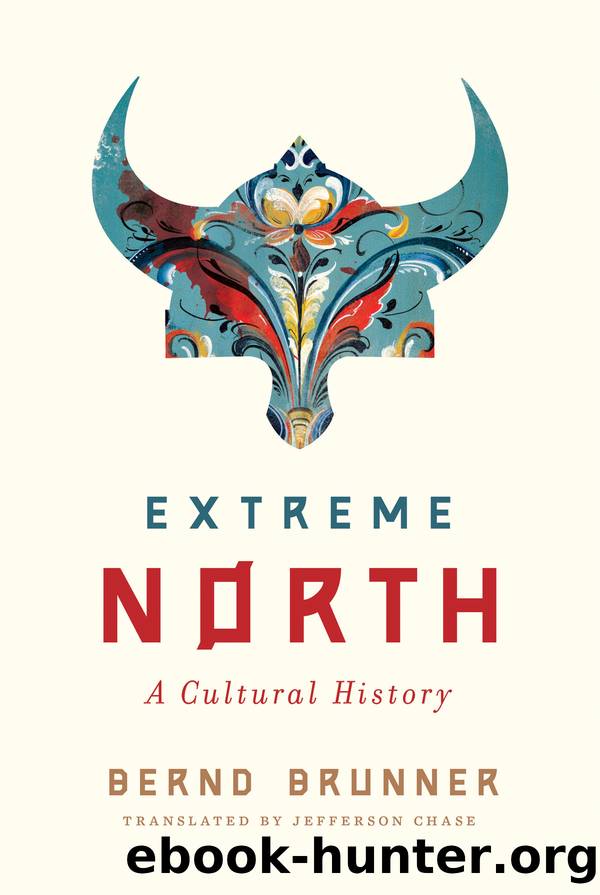Extreme North by Bernd Brunner

Author:Bernd Brunner
Language: eng
Format: epub
Publisher: W. W. Norton & Company
Published: 2022-01-08T00:00:00+00:00
At first glance, the Kensington Runestone may look authentic, but it was soon revealed to be a fake. Photo by Mauricio Valle/Wikimedia Commons
As late as 1952, Father James Michael Reardon wrote about what he called the âearliest originâ of Catholics in Minnesota. Reardon was driven by the same motive as Ireland: âNearly six centuries ago a group of Swedes and Norwegians made a journey west from Vinland and camped beside a lake on what is now Minnesota soil. The written record of that amazing voyage, unique in the annals of travel, tells the story of the heroic and tragic wanderings of this group of Catholic explorers from the distant fjords of Scandinavia who, in their hour of peril, invoked the aid of the Mother of God in the first prayer of which we have any extant account in the Western worldâ (from Reardonâs book The Catholic Church in the Diocese of St. Paul: From Earliest Origin to Centennial Achievement).
Ten years later, in the summer of 1962, the town of Alexandria celebrated the alleged six-hundredth anniversary of the stone. This was the zenith of its fame, and the stone was put on display together with a large sculpture of a human figure at the New York Worldâs Fair of 1964â1965. As religious historian David M. Krueger writes in Myths of the Rune Stone (2015): âThe Viking statue towering over the exhibit boldly proclaimed the superiority of the Nordic male body and likely served to invoke in the fairgoers a sense of nostalgia for an imagined past that was whiter than the present. Although the facticity of the rune stone was open to debate, the narrative contained enduring truths that resonated with a popular version of American history and culture under threat.â
Over the course of the next few decades, doubts about the stoneâs authenticity receded ever further into the background. When the topic was broached, the result was usually little more than a mention of the artifactâs âcontroversialâ origin. Even today some people refuse to relinquish the idea that the stone is genuine and contains deeper insights yet to be deciphered. The insistent belief in the legend is sometimes accompanied by the conspiracy theory, popular in certain circles, that the âtrueâ history of North America has been purposefully kept concealed from the public. A short reminder: No one knows where the Kensington runestone really came from.
There was a similar phenomenon in Canada in 1936. The Royal Ontario Museum acquired two halves of a broken sword, a battle ax, and a metal rod purportedly discovered several years previously southeast of the town of Beardmore. After examining photos, European experts confirmed that these were Old Norse artifacts. Twenty years later, the son of the man who found them swore under oath that his father had stumbled across the objects in the basement of a house in Port Arthur and buried them at the location where they were subsequently âdiscovered,â thus confirming growing doubts as to the artifactsâ authenticity. It appears as though these supposedly ancient objects were brought to North America around 1923.
Download
This site does not store any files on its server. We only index and link to content provided by other sites. Please contact the content providers to delete copyright contents if any and email us, we'll remove relevant links or contents immediately.
| Civilization & Culture | Expeditions & Discoveries |
| Jewish | Maritime History & Piracy |
| Religious | Slavery & Emancipation |
| Women in History |
Cecilia; Or, Memoirs of an Heiress — Volume 1 by Fanny Burney(32068)
Cecilia; Or, Memoirs of an Heiress — Volume 3 by Fanny Burney(31463)
Cecilia; Or, Memoirs of an Heiress — Volume 2 by Fanny Burney(31413)
The Secret History by Donna Tartt(18190)
Sapiens: A Brief History of Humankind by Yuval Noah Harari(13994)
Leonardo da Vinci by Walter Isaacson(12810)
The Radium Girls by Kate Moore(11627)
Sapiens by Yuval Noah Harari(5125)
How Democracies Die by Steven Levitsky & Daniel Ziblatt(4966)
The Wind in My Hair by Masih Alinejad(4850)
Homo Deus: A Brief History of Tomorrow by Yuval Noah Harari(4692)
Endurance: Shackleton's Incredible Voyage by Alfred Lansing(4513)
Man's Search for Meaning by Viktor Frankl(4295)
The Silk Roads by Peter Frankopan(4275)
Millionaire: The Philanderer, Gambler, and Duelist Who Invented Modern Finance by Janet Gleeson(4108)
The Rape of Nanking by Iris Chang(4024)
Hitler in Los Angeles by Steven J. Ross(3803)
The Motorcycle Diaries by Ernesto Che Guevara(3790)
Joan of Arc by Mary Gordon(3790)
